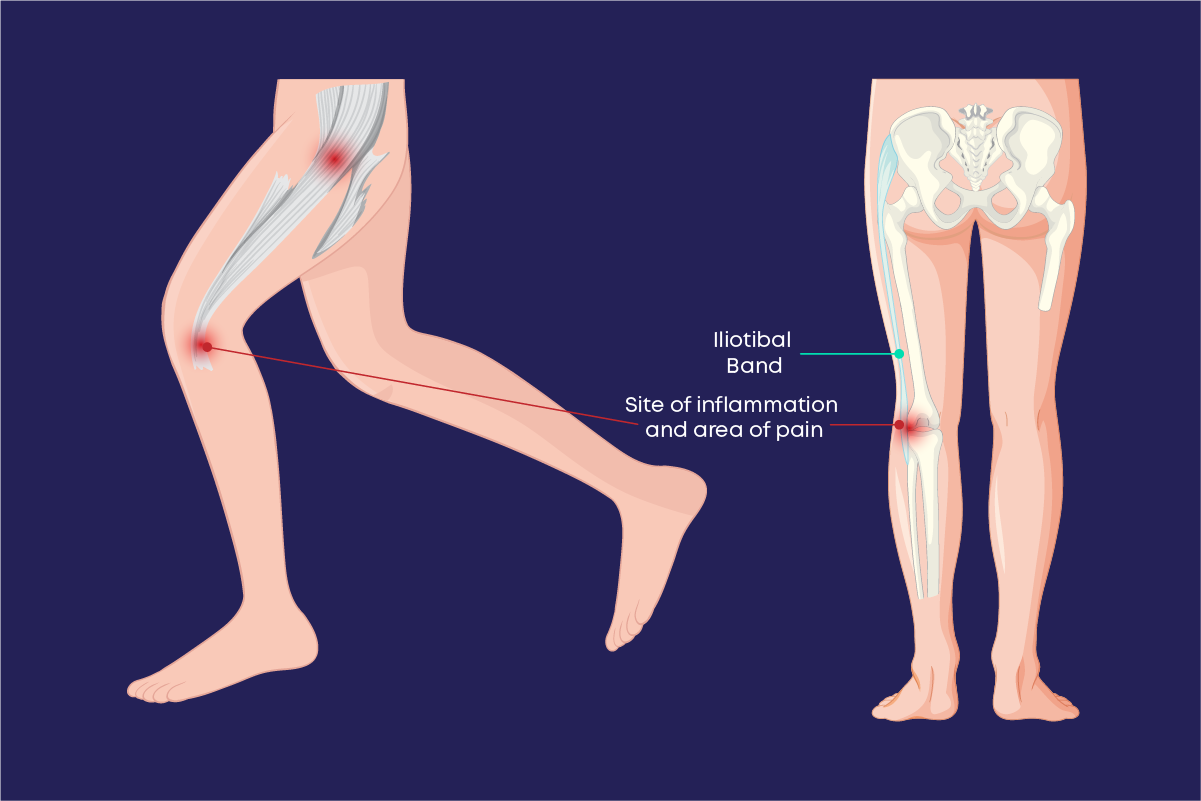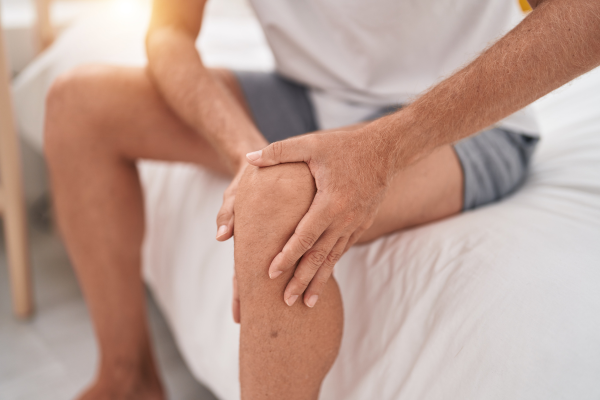Iliotibial band syndrome (ITBS) is the most common condition amongst runners, and those who exercise frequently, such as cyclists, basketball players, skiers, and football players. It often causes pain on the outside of the leg below the knee. It can make everyday movements like walking or standing for long periods of time uncomfortable. While it’s often seen in endurance athletes, it can impact anyone who engages in repetitive knee movements.
This article will explore what Iliotibial band syndrome is, the causes and symptoms to look out for, and iliotibial band syndrome treatment.
What is Iliotibial band syndrome?
The iliotibial band is a tendon on the outside of your leg, going from the top of your pelvic bone all the way down to your knee. It also has an attachment to the outside of your knee cap.
Iliotibial band syndrome occurs when the iliotibial band becomes irritated or swollen due to friction against the hip or knee bones. When the band is too tight, this rubbing can lead to discomfort and inflammation.

Common causes of Iliotibial band syndrome
There are a few different causes of Iliotibial band syndrome. As IT band syndrome is an overuse injury, it tends to get worse with repeated movement, so the more exercise you do, the more likely you are to develop IT band pain. There are particular things that can do with how you exercise that can increase your risk of developing iliotibial band syndrome. These include:
- Wearing worn out shoes
- Running for a long distance
- Running on slippery or uneven surfaces
- Not stretching enough before exercising
- Suddenly increasing your how far or how often you run
There are also other factors that can make you more susceptible to IT band pain. These include:
- Flat feet
- Bowed legs
- Knee arthritis
- A slight difference in your leg lengths
- Weak muscles in your hips or knees
Symptoms of Iliotibial band syndrome
The most common symptom of a tight IT band is a sharp knee pain or ache located on the outside of the knee. The IT band pain may spread up or down the leg, with the outside of your knee being swollen and tender to the touch. This IT band pain will increase more as a person runs, cycles, or performs other exercises that involve repetitive bending and straightening of the knee. Other symptoms include:
- Hip pain: As well as IT band knee pain, hip pain may also occur. This is due to the iliotibial band repeatedly rubbing against the greater trochanteric in your hip. This friction causes inflammation in your tendon and pain in the hip.
- Clicking sensations: You may feel a snap, click or a pop on the outside of your knee.
- Warmth and redness: The outside of your knee may look discoloured and feel warm to the touch.
Iliotibial band syndrome treatment
There are Iliotibial band syndrome treatments that can be done at home, such as resting until the pain is gone and using an ice pack to reduce swelling and redness. Pain medications such as Ibuprofen and Naproxen can also be used. Further iliotibial band syndrome treatments include manual therapy such as using a foam roller, posture training, steroid injections from your GP, and physical therapy. If none of the treatments work, your doctor may suggest surgery, although this is very rare.
The role of osteopathy and physiotherapy in IT band syndrome
Osteopathy and physiotherapy play a big role in treating and preventing iliotibial band syndrome. By addressing any muscle imbalances, improving flexibility of the iliotibial band, and correcting movement patterns, osteopathy and physiotherapy help to relieve IT band knee pain and reduce strain on the iliotibial band.
A physiotherapist may use a combination of hands on therapy, stretching techniques, and strengthening exercises to target weak or tight muscles contributing to the tight IT band. They can also assess things such as running or cycling mechanics to identify any biomechanical issues that may be causing excessive stress on the iliotibial band.
Osteopaths take a comprehensive approach to treating iliotibial band syndrome by addressing its root causes and providing targeted care. They begin by assessing your posture and gait to identify contributing factors. Treatment typically includes hands-on soft tissue techniques to reduce tension, along with tailored stretching and strengthening exercises to improve flexibility and support weaker muscles.
Here at Carl Todd Clinics, we offer osteopathy and physiotherapy treatments to help manage and overcome iliotibial band syndrome. Our team can assess your movement patterns, provide hands on therapy and guide you through targeted exercises to reduce pain and prevent further injuries. Whether you’re a runner, cyclist, or simply dealing with IT band pain, we’re here to help you get back to doing what you love. Get in touch with us now to find out more or book an appointment today!





